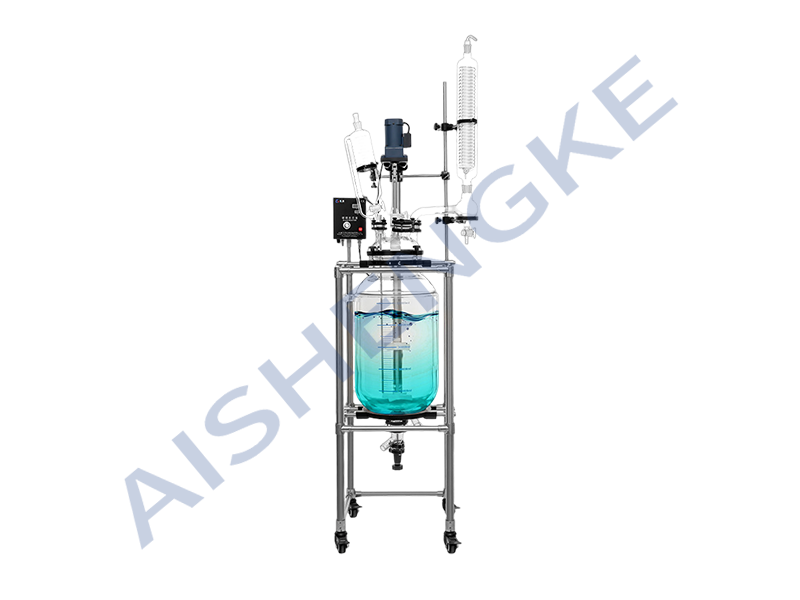The difference between borosilicate glass and ordinary glass
Release Time:
2022-10-21
Pageviews:
Laboratory-scale glass reactors, as laboratory equipment, must have good chemical properties. Then the glass reactor must have excellent resistance to rapid cooling and rapid heating, low expansion coefficient, and corrosion resistance. It is suitable for use as a laboratory glass reactor.
Many people will wonder why high borosilicate glass is used for glass reactor vessels, thereby increasing the cost of purchasing glass reactor equipment.

The difference between high borosilicate glass and ordinary glass.
The content of boron trioxide and silicon dioxide in borosilicate glass is higher than that of ordinary glass. The content of boron trioxide even reached 14%, and the content of silica was 80%.
The silicon content of ordinary glass is about 70%, and ordinary glass generally does not add boron.
High borosilicate glass has low expansion coefficient, high softening point and good resistance to rapid cooling and rapid heating. The expansion coefficient of high borosilicate glass is about 32~33*10(-7).
The expansion coefficient of ordinary glass is about 80~100*10 (-7), and the resistance to rapid cooling and rapid heat can reach 200~300℃.
Latest News
2024-09-03
Abstract: Oil deacidification is an important step in food processing, which aims to remove free fatty acids in oil and improve its quality and stability. Traditional deacidification methods have some limitations, such as low efficiency, high energy consumption, and loss of nutrients. In recent years, molecular distillation technology has gradually attracted attention as a new deacidification method. This article will introduce the application of molecular distillation in oil deacidification, including the principle, operation process and advantages, and focus on the outstanding advantages of Aishengke in molecular distillation technology.
Vitamins are products that are closely related to people's lives, and have become one of the main bulk products in the international pharmaceutical and health care products market. The amount of vitamin E is the largest, followed by vitamin A, vitamin C, vitamin D and so on. With the growth of economy and the improvement of people's living standards, the demand for vitamin products will further increase, and people's requirements for their quality and grade will also further increase. Therefore, as an important separation technology in the production of many vitamins, molecular Distillation technology will also play an increasingly important role in the vitamin industry.
Glyceryl monostearate (GMS), abbreviated as monoglyceride, is produced from natural vegetable oils and fats. The active ingredient is purified by molecular distillation technology to more than 90%, also known as molecular distillation monoglyceride. It is the most widely used food Additives, safe to use in the production and processing of food, medicine, plastics, etc., account for more than half of the emulsifier consumption in the market.
The principle of molecular distillation is to make use of the different degrees of affinity between different molecules. By controlling the conditions such as temperature and pressure, the mixture begins to vaporize. Different components in the vapor form liquids in the condenser and are separated according to their boiling points. This distillation method not only has a good separation effect, but also can be repeatedly separated and purified, and is widely used in chemical, pharmaceutical and other fields.
Molecular distillation is a common chemical method used to separate and purify compounds. In the pharmaceutical industry, molecular distillation is widely used in pharmaceutical purification. This article will focus on the application of molecular distillation in pharmaceutical purification and provide some specific examples.
Laboratory vacuum distillation equipment has undergone significant advancements in recent years, driven by the need for higher efficiency, improved safety, and enhanced user experience.
Global recruitment of distributors
If you recognize the brand, technology, products and market prospects of Aishengke, we look forward to establishing a strategic partnership with you for win-win cooperation and development. Looking forward to your joining!

